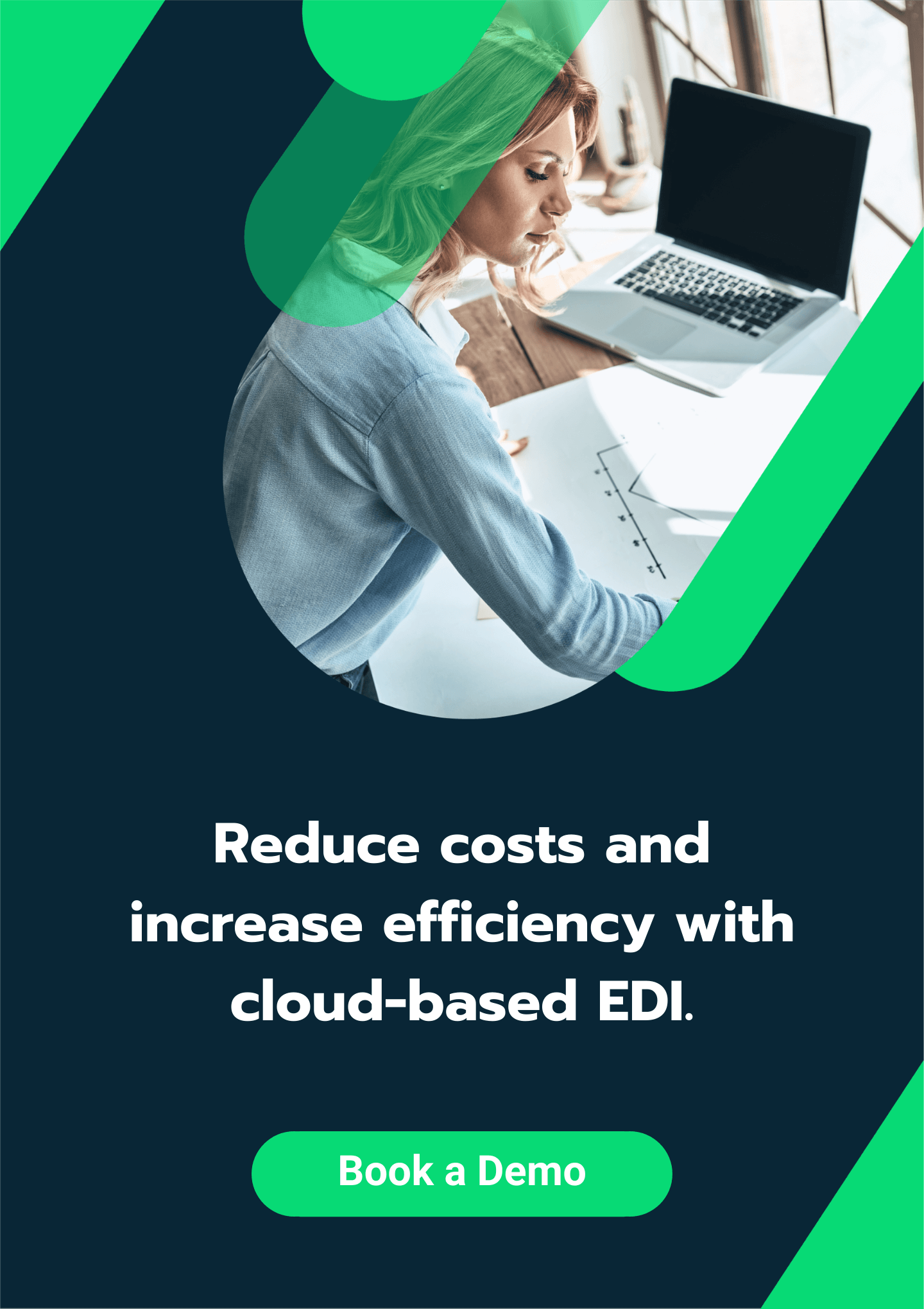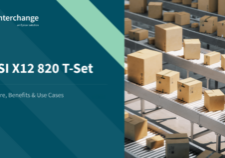Our Plan at Data Interchange to Change EDI and Supply Chain Management
In the past year, the business world has undergone significant changes, and Electronic Data Interchange (EDI) has been changing along with it. For savvy businesses, this year presents an opportunity to rethink processes and reimagine the possibilities, particularly when it comes to supply chain sustainability. Rethinking your relationship to EDI is a great place to start.
At Data Interchange, we’ve spent more than three decades helping businesses improve supply chain management (SCM) using EDI. In this blog, we will explain our approach to changing EDI and describe how this new strategy can transform your business and supply chain outcomes. By making EDI more accessible, companies can centre themselves around their supply chain and gain a competitive advantage. Let’s begin.
How EDI-as-a-Service improves supply chains and delivers business outcomes
Although EDI is a 20th-century idea, it’s recently undergone a number of 21st-century changes. Most notably, an increasing number of cloud-based tools and management services have been introduced to the market. These easy-to-use tools reduce barriers to entry — particularly for smaller businesses and those lacking in-house EDI skills — and they can accelerate the deployment of an EDI system, even within complex supply chain environments, while improving its efficacy.
A great example of EDI-as-a-Service in action is Web EDI, which delivers browser-based access to self-service tools, harnessing the simplicity of standard SaaS (Software-as-a-Service). However, EDI-as-a-Service extends beyond Web EDI to encompass far more flexible and ‘hybrid EDI’ models that combine multiple types of EDI delivered as an outcome by managed service providers. It’s the combination of both of these components that make up the concept of ‘EDI-as-a-Service’.
Self-service software + Managed Services = EDI-as-a-Service.
Businesses can benefit from EDI-as-a-Service in a number of ways — adopting fully managed services or simply benefiting from self-service tools. However, in all cases, outcomes are improved because they are simplified — even helping businesses with significant in-house EDI expertise. After all, EDI systems must meet your internal requirements, but they need to work for your supply chain partners as well. EDI-as-a-Service is more accessible and easier to use for both parties.
How EDI-as-a-Service delivers business outcomes
EDI (and EDI-as-a-Service) exist to simplify supply chain management — but the larger goal here is to deliver tangible, measurable business outcomes. And effective EDI system delivers three main benefits:
- Efficiency: EDI automates supply chain communication and management, creating more efficient workflows that reduce overall costs.
- Reinvestment: The cost savings delivered by EDI create opportunities to reinvest in infrastructure, products and growth.
- Visibility and control: The flow of information through an EDI system provides unparalleled visibility over supply chains, and the ability to control those relationships based on real data.
Essentially, EDI-as-a-Service enables businesses to focus on the benefits made possible by EDI instead of getting bogged down in the challenges of EDI implementation, rollout and management.
With legacy EDI solutions, businesses traditionally faced numerous issues, including increased complexity, integration and management system problems, partner onboarding and adoption difficulties, and more. Modern EDI-as-a-Service can help businesses bypass these issues. But more than just overcoming challenges, EDI-as-a-Service solutions improve the quality and flexibility of your EDI system.
At Data Interchange, our managed services provide valuable EDI expertise and end-to-end integration to ensure smooth communications with your partners. We also configure your implementation, ensure business continuity and help you achieve positive outcomes without any of the associated supply chain risks.
Choosing the right EDI and EDI managed service provider can help businesses:
Improve adoption rates
Two-way communication is an essential component of EDI — and communication is also necessary to optimise relationships and outcomes at every stage of the supply chain. By ensuring that every single supplier within your supply chain uses EDI, you create a coherent system that spans all (rather than part) of your supply chain.
Ensuring high EDI adoption rates across your supply chain helps:
- Reduce data errors
- Boost efficiency
- Prevent time-consuming ad hoc/manual tasks
- Improve visibility
However, getting your trading partners on board is a significant challenge, primarily due to the complexity of doing so. Building a system that works for everyone requires overcoming any and all barriers to entry, including lacking technology and insufficient EDI expertise. Ultimately, onboarding partners requires EDI know-how and the right tools.
This is where EDI-as-a-Service comes in — the simplicity of Web EDI tools and managed services enable businesses to bring more of their partners on board, regardless of their IT skills or previous EDI experience. EDI providers can also ensure that your system is able to accommodate different transmission protocols, from repurposed protocols (FTP, SFTP and HTTP) to EDI-specific protocols (OFTP, AS2).
How Data Interchange can help: With our VAN Solution, DiNet, we offer extensive protocol support to ensure all of your messages are delivered using the protocols that your partners specify. Our Web EDI tool, Darwin Hub, enables your suppliers to exchange standardised information within a simple EDI solution that only requires a web browser. Darwin Hub seamlessly integrates with your internal systems and enables your suppliers to onboard quickly and then receive, process and create EDI documents. This also ensures that all of your suppliers are using the same supplementary attachments, such as the labels or delivery notes for shipments.
Meanwhile, our Managed Services teams liaise with customers, suppliers and third-party networks — ensuring that messages are sent in the correct format, and that your entire system runs smoothly. They also onboard new partners and migrate EDI message flows on your behalf.
Increase supply chain visibility
While EDI is intended to facilitate communication and efficiency, the end goal is to create more visibility over the flow of goods within a supply chain. Digitising and standardising information flows across your entire supply chain can make this possible. Full visibility over your inventory management and products and services can offer a clear, accurate perspective from which to make decisions. This visibility enables businesses to plan around supply chain activities and become a true ‘supply chain centred business’.
How Data Interchange can help: Our EDI VAN Solution, DiNet, allows you to see your file transactions in real-time with a state-of-the-art dashboard. DiNet’s dashboard gives you flexible filtering and reporting so that you have visibility over all the data that matters to you. To gain holistic visibility, it’s also essential to set up reports — and remember, the value you’ll derive from these reports comes back to adoption, as the more partners you have on board, the more visibility you’ll gain. Our Managed Services can set up these reports for you, or you can simplify the process by using sophisticated cloud-based tools.
Add flexibility
The overwhelming majority of modern businesses will require a flexible approach to EDI. And because it’s customisable, EDI-as-a-Service is inherently more flexible than traditional forms of EDI.
EDI-as-a-Service empowers businesses to achieve flexibility while maintaining supply chain simplicity and overcoming rollout challenges.
What this will look in practice like will vary from business to business. The right partner can help you create a multifaceted, hybrid EDI solution that can accommodate both your internal requirements and those of your supply chain partners. This could mean different combinations of EDI types, self-service cloud-based-tools and managed services.
What this delivers to supply chain management is the ability to engage with partners all around the world on a flexible basis. It’s possible to change suppliers, re-organise relationships and expand — all while experiencing improved visibility and communication and without having to worry about B2B integration challenges or compatibility.
How Data Interchange can help: With our VAN Solution, DiNet, we take care of the infrastructure so that you don’t have to. This means that you and your trading partners will always be on the most up-to-date version of our platform. With our Web EDI tool, Darwin Hub, you can easily add more suppliers to the web portal to ensure maximum efficiency. And for the most flexibility, our Managed Services can help you develop a customised hybrid EDI solution to meet your unique needs and those of your partners.
Data Interchange: transforming supply chains
Remember, EDI is multifaceted — and that’s why we are committed to making it easy for businesses to adopt the right EDI strategy at the right time. Making the most suitable choices for your business enables you to deliver those higher-level outcomes in both the short- and long-term futures.
In 2023 and beyond, there’s no underestimating the importance of flexible, responsive and effective supply chain management. Data Interchange can help you kickstart this process — delivering EDI-as-a-Service and practical cloud-based tools, helping you set up and launch a hybrid solution, and/or providing consulting advice on what’s best for your business and supply chain needs. EDI sits at the heart of future supply chain management, and EDI-as-a-Service makes adoption easy. Stop pondering and start planning with the visibility of EDI today. Get in touch, we’d be happy to help.

































































































































